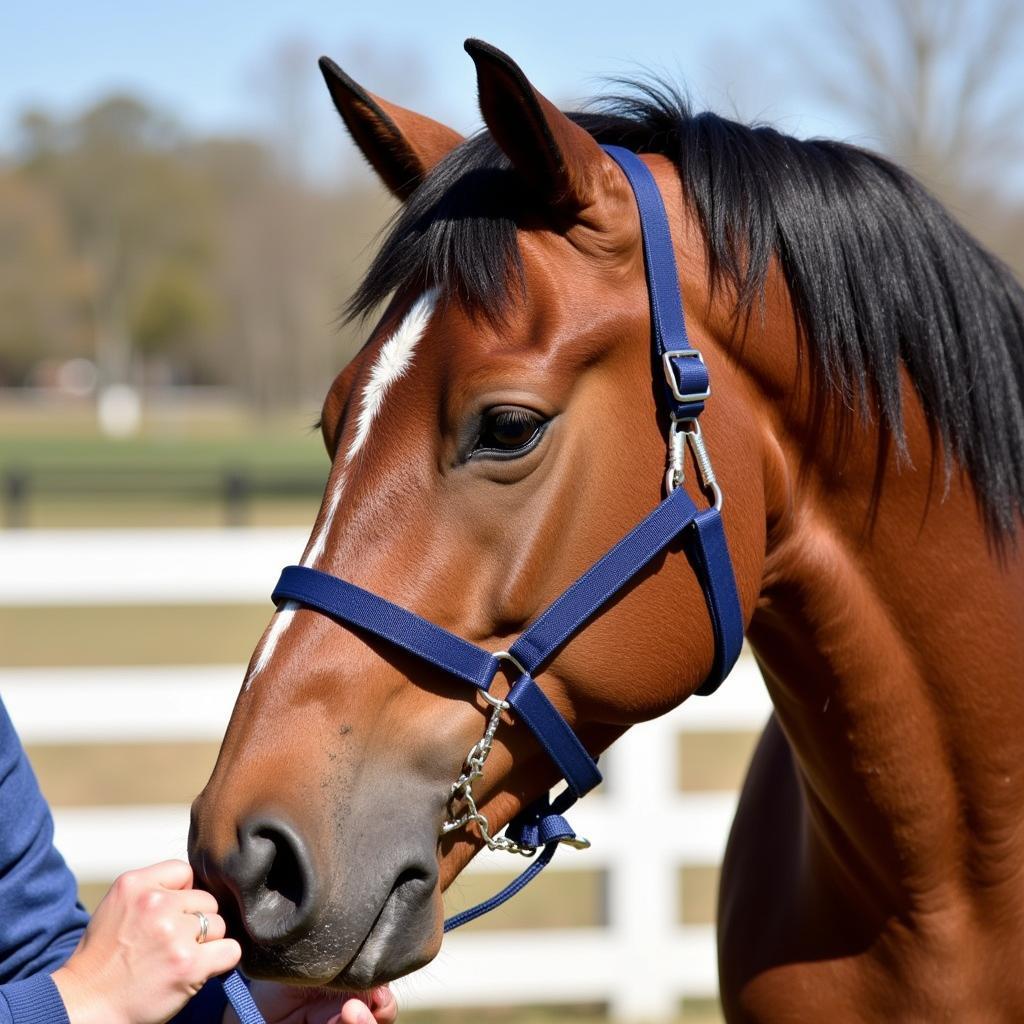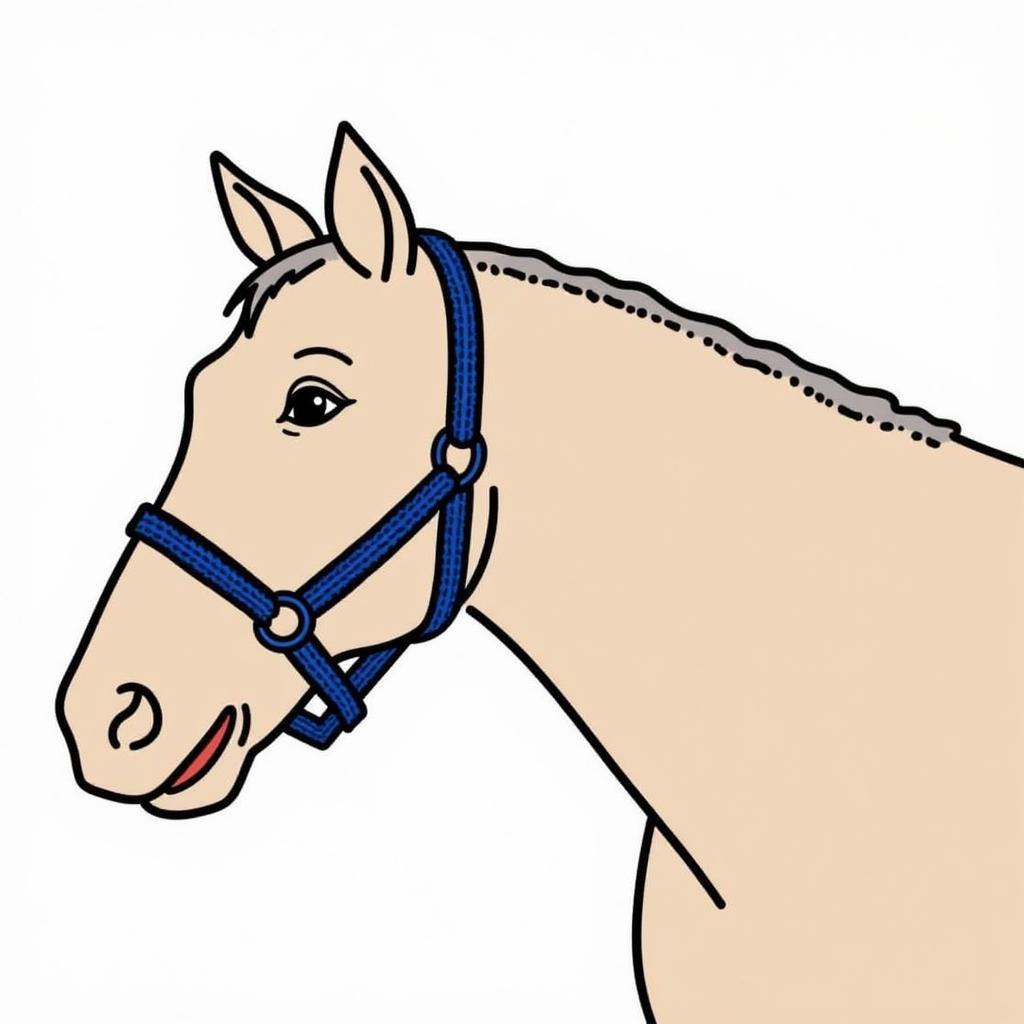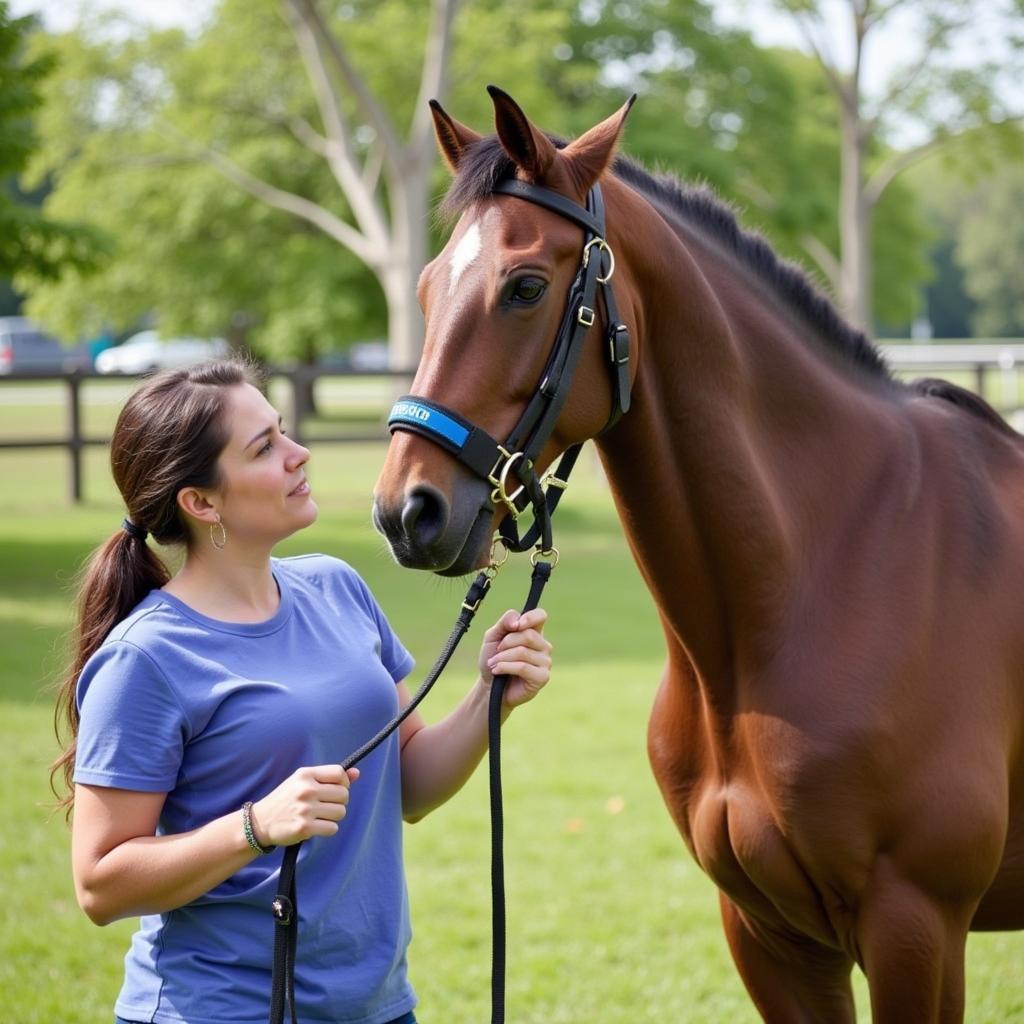Training Halters For Horses are an essential tool for groundwork and early training. They provide more control than a standard halter, allowing you to communicate effectively with your horse and guide them through new experiences. Choosing the right training halter and understanding its proper use is crucial for building a positive and trusting relationship with your horse.  Horse wearing a training halter during groundwork training
Horse wearing a training halter during groundwork training
Types of Training Halters for Horses
There are several types of training halters available, each with its own advantages and disadvantages. Let’s explore the most common ones:
- Rope Halters: These halters are made from durable rope and apply pressure points to the horse’s head, offering clear communication. Rope halters are versatile and suitable for various training methods.
- Leather Halters: Leather halters can be used for training, particularly for show or presentation purposes. While they provide less pressure than rope halters, they offer a more refined look. Check out our selection of leather horse halters.
- Web Halters: Web halters are often used for everyday handling and can be adapted for some training activities. However, they typically offer less precise control than rope or leather training halters.
- Combination Halters: Some halters combine materials like rope and leather or rope and nylon to provide both comfort and control.
Choosing the Right Training Halter
Selecting the appropriate training halter depends on your horse’s temperament, training level, and your training goals.
Consider Your Horse’s Sensitivity
Some horses are more sensitive to pressure than others. For a sensitive horse, a thinner rope halter might be more suitable. A less sensitive horse might require a thicker rope or a different halter type altogether.
Match the Halter to Your Training Style
Different training methods may benefit from specific halter types. For example, rope halters are often preferred for natural horsemanship techniques due to their precise pressure application.
Ensure Proper Fit
A well-fitted training halter is essential for both comfort and effectiveness. The halter should sit snugly but not too tight, allowing you to communicate clearly without causing discomfort.  Correctly fitted training halter on a horse
Correctly fitted training halter on a horse
How to Use a Training Halter Effectively
Training halters should be used with a light hand and clear intentions.
Pressure and Release: The Key to Communication
The principle of pressure and release is fundamental when using a training halter. Apply pressure to cue your horse and immediately release it when the desired response is achieved. This teaches the horse to associate the release of pressure with the correct behavior.
Consistency is Key
Consistent application of cues and pressure is crucial for effective communication. Your horse will learn to understand your signals more quickly if you are consistent in your approach. You can find other helpful accessories for horses on our website.
Avoid Excessive Pressure
While training halters offer more control, it’s important to avoid using excessive pressure. Harsh handling can damage the horse’s sensitive facial nerves and create fear or resistance.
“Patience and consistency are paramount when using a training halter. Remember, it’s a communication tool, not a punishment device,” advises renowned horse trainer, Sarah Mitchell.
Benefits of Using a Training Halter
Training halters can offer several advantages in horse training. They improve communication, enhance control, and promote a more refined response from the horse.
- Enhanced Communication: The pressure points of a training halter allow for clear signals, making it easier for the horse to understand your requests.
- Increased Control: Training halters provide more control than standard halters, particularly in challenging situations.
- Refined Responses: With consistent use, training halters can encourage lighter, more subtle responses from the horse. You may also consider looking at some of the draft horses for sale in nc we have available.
 Horse responding to cues with a training halter
Horse responding to cues with a training halter
Conclusion
Training halters are valuable tools for horse owners seeking to improve communication and control during training. By selecting the right halter and employing proper techniques, you can build a strong foundation for a positive and successful training journey with your horse. Remember to prioritize clear communication, consistent cues, and a gentle approach. A well-chosen and properly used training halter can be instrumental in developing a deeper connection with your horse. Looking for a black halter for horses or a green horse halter? We have those too!
FAQ
- What is the best type of training halter for a beginner?
- How do I know if my training halter fits correctly?
- Can I leave a training halter on my horse overnight?
- What are the common mistakes to avoid when using a training halter?
- How long does it take to see results with a training halter?
- Can a training halter be used on all breeds of horses?
- Where can I find quality training halters for sale?
Need help? Contact us at 0772127271, [email protected] or visit us at QGM2+WX2, Vị Trung, Vị Thuỷ, Hậu Giang, Việt Nam. We have a 24/7 customer support team ready to assist you.